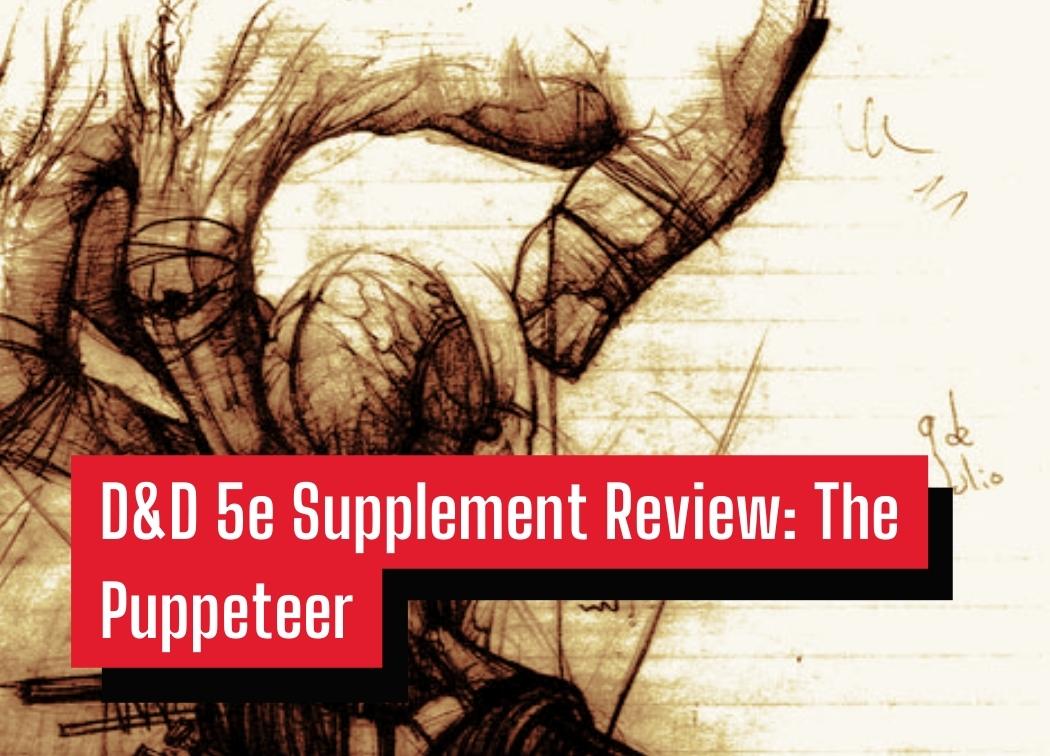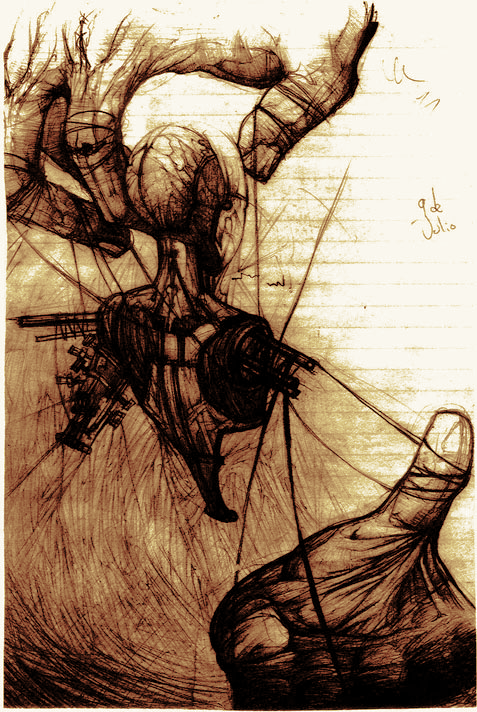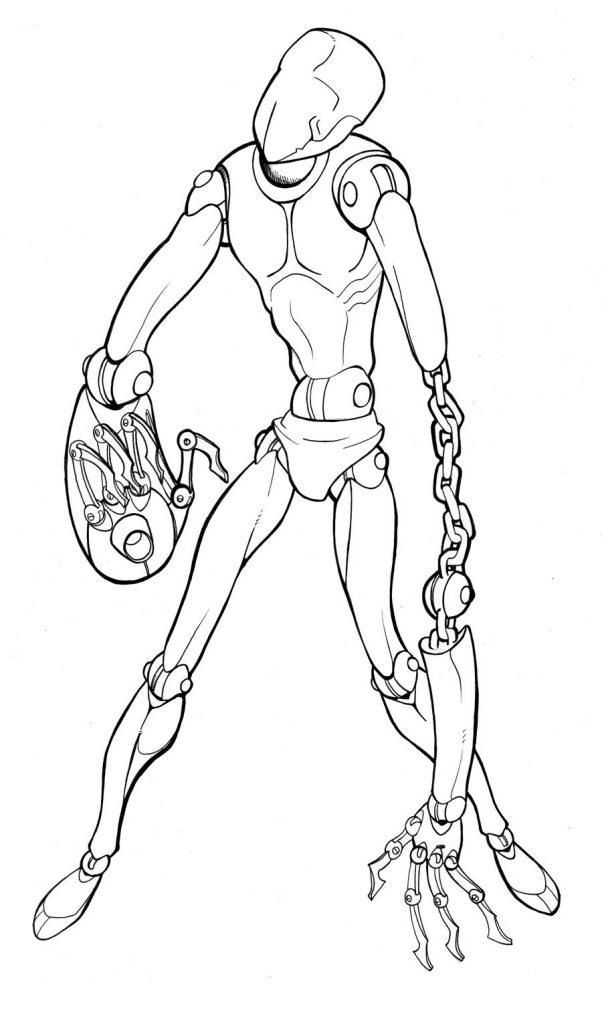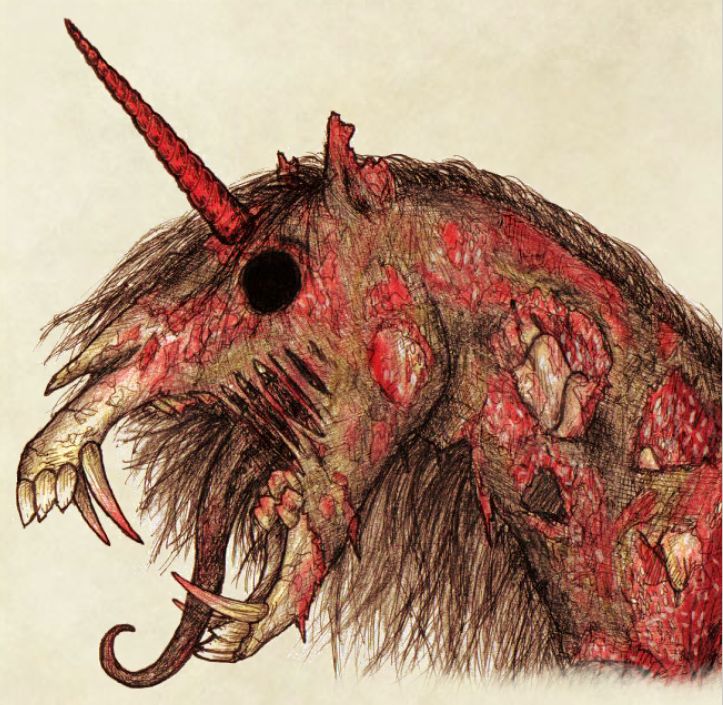D&D 5e Supplement Review: The Puppeteer

The Puppeteer by Jonathan Chia and Andrew Seguel is a supplement that brings a brand new class, the puppeteer to D&D 5e. As a puppeteer, you’ll use your nimble fingers, quick wits, and magical chakra strings to manipulate puppets around the battlefield.
I honestly wasn’t certain what to expect when I began my read-through of this supplement. First of all, I’m not keen on pet classes. Second of all, puppets seem like an odd choice to build an entire class around. I mean, I could see a puppeteer being a great subject of a bard subclass, but a full class?
It was great to have my concerns be proven entirely wrong. This class is unique, it has a well-defined niche, and it has four fun and flavorful subclasses that give your interesting ways to build a terrifyingly powerful master of puppets.
Out of combat, the puppeteer is the classic face of the party niche thanks to the puppeteer’s Throw Voice and Dress Up features. You can also utilize lifelike puppets of critters as scouts in potentially dangerous areas.
When in combat, the puppeteer can dish out decent damage and even provide some utility, but their true niche in combat is to be the master of control. A skilled puppeteer can control both the battlefield and the enemy creatures.
You can find The Puppeteer on the DMs Guild. While I’ll say right off the bat that this is a solid supplement that’s certainly worth the $5 purchase price, feel free to read the rest of my review below if you need some convincing!

Clean Formatting
The layout isn’t anything to write home about. It’s extremely similar to WotC’s official layout and formatting. That’s not to say that it’s a bad thing, it’s clean and easy to read, but it’s nothing special either.
I would’ve appreciated a couple of bookmarks in the PDF as well. It’s currently only a 15-page supplement so it’s not difficult to scroll through to find the information you need. However, it would’ve been nice to have at least a bookmark for each of the archetypes and perhaps the table that details what you gain on a level-up.
Regardless, the supplement is well-written and edited. It’s easy to read and is lacking obvious spelling/grammar mistakes. It’s not flashy, but it’s consistent and well-done which at the end of the day is what matters most.
A Unique and Inspired Take on D&D 5e’s Class System
I feel like I’ve written and will continue to write the word “unique” about a billion times this review, but it’s true! The puppeteer is a class that constantly straddles the line between martial and spellcaster. Sure, they don’t have spells (some actually do), but the puppeteer has an arsenal of spell-like effects.
The puppeteer just has a ton of features to keep track of in general. This is on top of all of their unique puppets and potential modifications for those puppets as well. I could see this being an excellent class for someone who wants the complexity of playing a spell caster, but doesn’t want to keep track of all those damn spells.
Depending on your subclass you may have up to three creatures at your command on any given turn. You can come up with so many fun tricks and tactics to try out with that many tools at your disposal!
Battlefield Control
In combat, control is the name of the game for a puppeteer. At 5th-level you can control up to two puppets at once, meaning you can have up to three creatures under your control at a time. You can cover so much ground with that many creatures, that alone gives your party an advantage in an encounter.
A puppet needs to be controlled by a puppeteer and a puppeteer needs strings to do so. The puppeteer class uses chakra strings which allow the puppeteer to perform fantastical feats with their very special puppets.
These strings can also be used to provide a bit of battlefield control as well. You can detach the strings from one of your puppets and them to fling items across the battlefield, restrain a creature, or even temporarily disarm a nearby opponent.
Your puppets get a feature called Click-Clack which allows it to take one of three different actions that affect creatures within a 10-foot-radius around your puppet. Torment works as both a pseudo taunt and disrupts a caster’s concentration. Discord deals hefty AoE psychic damage. Lastly, Fear is well, sort of like the spell Fear.
Each of the four subclasses gains new ways to further control the battlefield, but we’ll touch on those later. Regardless, this is certainly a class for those of us that enjoy preventing the enemy from dealing damage rather than deal damage ourselves.
A Pet Class That Actually Works!
The tricky part about this class is that you share everything with your puppets. You share your movement, your action economy, and, of course, your money and resources to build all of these puppets. You’re going to have to make careful decisions every turn and every purchase as one wrong move could cost you dearly.
This is also what makes the puppeteer a balanced class too. While some subclasses operate differently than others, they are all balanced around the puppeteer needing to share something with their puppets to have them unleash their full potential.
Each puppet also scales with your puppeteer as it levels, and it scales in a manner that makes a significant impact on the puppet’s power. This is, honestly, my main gripe with the beastmaster ranger which has so many issues with its pet scaling at high-level play.
It’s good to see that the puppets work both in terms of “the numbers” and the action economy. While how fun a class is, is most important, they shouldn’t have to sacrifice good game design and balance to be fun.

A Tinkerer’s Playground
I could see the puppeteer being a min-maxer’s playground. For the record, I’m not saying that negatively. Min-maxing is a legitimate playstyle that people genuinely enjoy.
The puppeteer gives the player just so many fun tools to play around with. You can upgrade your puppets, you can enhance said puppets, and you have so many features to utilize in and outside of combat. This is an absolute blast for someone who wants to stretch 5e to its limits.
But as I said, while we have so many different options to choose from, the class is still well balanced. Sure, you can control three creatures on the battlefield at a time, but you still only have a finite amount of actions per turn.
You have a ton of options here, and for someone that’s constantly looking to use the perfect tool for the job this class will probably give you it more often than not. However, the designers did an excellent job of reigning it all in and ensuring no one will completely break the game in doing so.
Uses In and Out of Combat
Every class has its strengths and weaknesses, but in my opinion, good class design is a class that can function well in and out of combat encounters. After all, you want to be able to contribute to the entire game, not just parts of it!
The puppeteer does this quite well. They make for a respectable face character.
A puppeteer is a master craftsman and ventriloquist. They can disguise their puppets to make them look eerily lifelike. Combine this with the ability to throw your voice anywhere in a 30 ft. radius and you can pull some serious shenanigans with your puppet.
Puppeteers also gain access to small lifelike puppets that look exactly like tiny animals. These can be used to scout ahead in various location and they can cover air, sea, and land without any issues. You can even choose to see and hear through your puppets just like how a wizard would with their familiar!
Interestingly enough, a puppeteer will obtain all of these features by 2nd-level. Some subclasses may get additional out of combat options, but you’re pretty much good to go as soon as you hit 2nd-level in terms of being the party’s face.
Four Archetypes to Choose From
Tinkerer
The tinkerer has 3 different types of puppets they can craft and control. Each of these has different unique abilities and modifications, called modules, that can be attached to the puppets to enhance their capabilities or give them brand new abilities to use.
The soldier is the cheapest and most basic of the three, however, you can have it wear and wield equipment. The constrictor is a crowd control-focused puppet that can grapple and restrain a creature. Both of these puppet types can only have one module attached to them at a time.
Then there’s the warframe, the most powerful puppet the tinkerer can craft. It can have two modules attached to it in addition to a unique Breath Attack action which is similar to the dragonborn’s breath weapon, but considerably more powerful. Like the soldier, the warframe can also equip weapons and armor.
At a high enough level, you can jump into your warframe and control it. So, you know, if becoming a mecha pilot has been an aspiration of yours, here’s your chance!
The tinkerer is a fun subclass because you can mix and match your puppets and enhancements as the need arises. It’s truly a great choice for a player that loves to have both a lot of options while having the perfect answer to any problem somewhere in their arsenal.
Collector
The collector is a subclass that is one part taxidermist, one part necromancer. Your specialty is turning corpses into special puppets called manikins. This subclass has a feature called Heartstrings which allows you to trade HP for the temporary use of the creature’s special abilities that they held in life.
As you become more skilled in turning corpses into manikins you’ll learn to turn corpses into temporary manikins on the fly. Simply attach your chakra strings and you’re good to go!
Eventually, you’ll become so powerful that you won’t even need to wait for the body to hit the floor. The collector can eventually attempt to control a still-living creature and can even use Heartstrings to use the creature’s full statblock or deal a sizeable amount of necrotic damage directly to the controlled creature.
How much deeper down the rabbit hole could the collector possibly go? Oh, you can temporarily become one of your puppets at a high enough level. Sure, there are downsides such as “your body decays while you’re not in it”, but that’s a future you problem.
The collector certainly deserves a look for anyone who is really into recycling or just has aspirations to control the undead. This is also the most damage-dealing focused of the four subclasses so keep that in mind as well.

Maestro
The maestro is, in my opinion, the most tactically complex of the four subclasses simply because of the vast amount of options you have at your disposal at any given time. This subclass has a unique puppet type called the zealot. Each zealot has a unique magical damage type based on one of the four elements.
It seems simple enough so far, right? Yeah.
Zealots can be instructed to take one of three unique attacks by their puppeteer. These include a single target damage attack (Dance), a crowd control attack (Embrace), or an AoE damage attack (Supplicate).
Now, if a creature is under the effects of Embrace or Supplicate and another zealot deals damage to the creature in question, both of the zealots’ damage types will combine. This combination deals an additional 2d6 damage, requires a saving throw to avoid crowd control or a debuff, and changes the damage type entirely.
Setting up these combos is crucial, and picking and choosing which zealots you use in an encounter can seriously impact the result of the fight, especially if you can exploit a creature’s vulnerabilities.
As you get more powerful you’ll gain features that allow you to enhance your Supplicate for a limited time as well as change it into an AoE healing ability for a limited time.
If you’re someone who lives for deriving battlefield tactics and exploiting the weaknesses of your enemies the maestro is an excellent subclass to scratch that itch!
Imagineer
The Imagineer is the newest subclass in the supplement having been added this past September. It’s also by far the strangest of the four but in a good way!
See, rather than having a bunch of puppets to control and modify, the Imagineer only has one puppet called the companion. This puppet, however, is considerably more powerful than a typical puppet and it does not require you to attach your chakra strings to it to control it.
The companion has their turn in the initiative order which comes directly after your turn. You’ll still control your companion on its turn, but this allows you to act independently of your puppet, unlike the other puppeteer subclasses.
There are, however, some major downsides to this. For example, it’s super expensive to rebuild a companion if they’re destroyed and unable to be revived. However, each time a companion is destroyed you’ll suffer a level of exhaustion which increases once per time your companion has ever died.
This means that if your companion is destroyed 6 total times, you will straight-up die upon witnessing its final death.
While this is a rough consequence, the benefits of the companion far outweigh this potential downside. For example, companions have independent ASIs that can be used to improve their ability scores or take feats!
The Imagineer can also use their Imagination Points, a unique Imagineer resource, to enhance their companion’s ability checks, cast spells, and enhance their companion’s combat abilities.
Oh, and you can eventually learn and cast high-level spells from the wizard’s Illusion and transmutation lists. This benefit doesn’t come until at least level 13, but it’s certainly worth mentioning!
The Imagineer is a unique take on a unique class. No longer are you the puppet master, you’re the best friend of a magical being!
Conclusions
I’ll be honest, I’m typically not someone that enjoys pet classes. That goes for both playing as them and DMing for them. Many of the attempts in 5e pet classes are, in my opinion, very clunky in terms of how they interact with the action economy.
Suffice to say, the puppeteer has won me over. Jonathan and Andrew did an excellent job of both balancing the class’ power and ensuring that it’s both playable and intuitive with regards to how it’s played.
Oh, and that’s without sacrificing any flavor in favor of balance. Seriously, this class is filled to the brim with unique and flavorful mechanics.
If playing a master of puppets sounds like your jam, this is a class for you. If being a unique party face and controlling the battlefield in combat sounds like a perfect playstyle, check this class out. Hell, if you’ve been itching to try a fun pet class that works you should take a look at the puppeteer!
